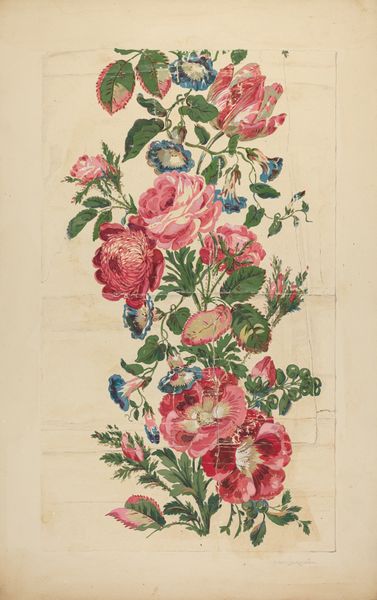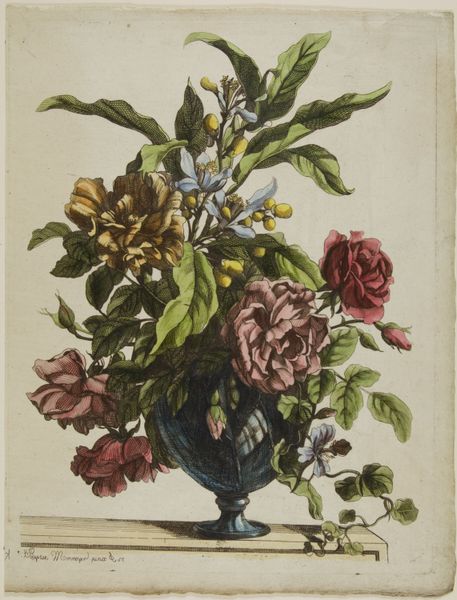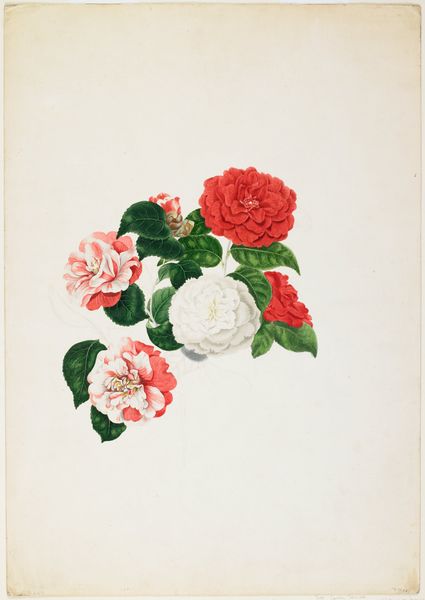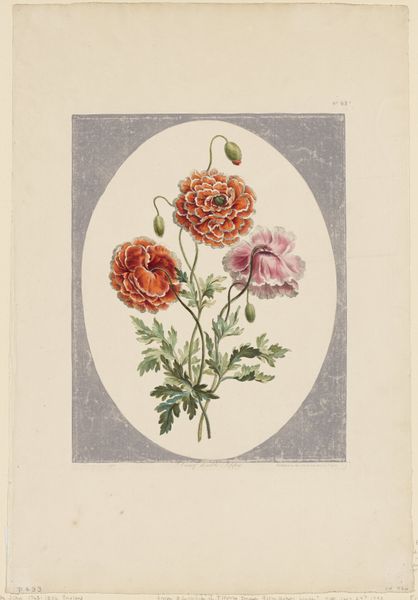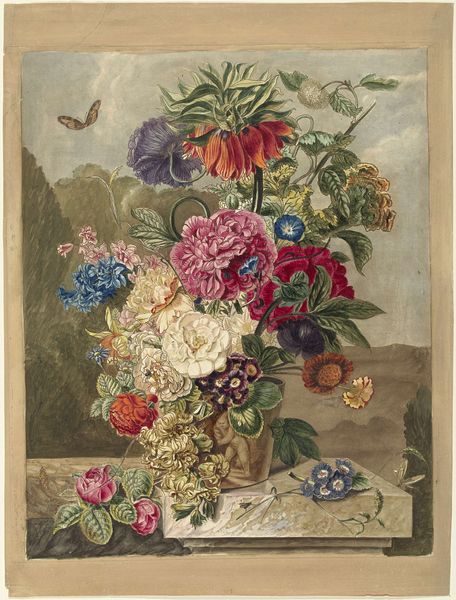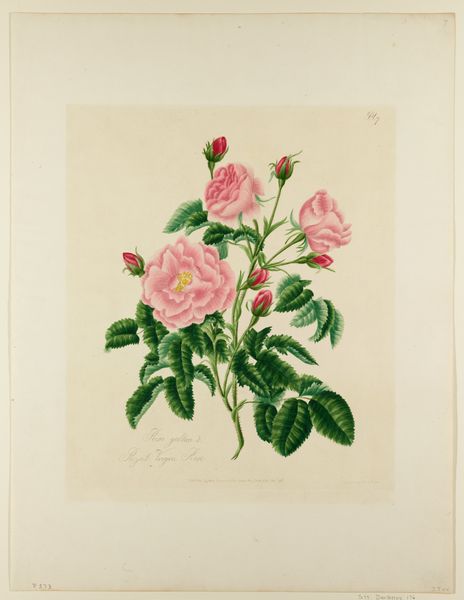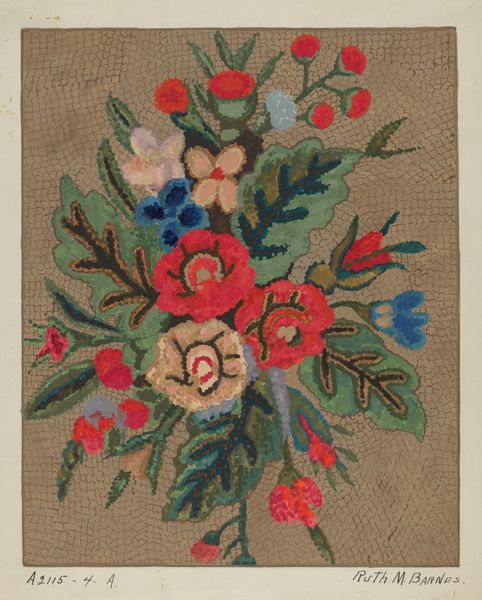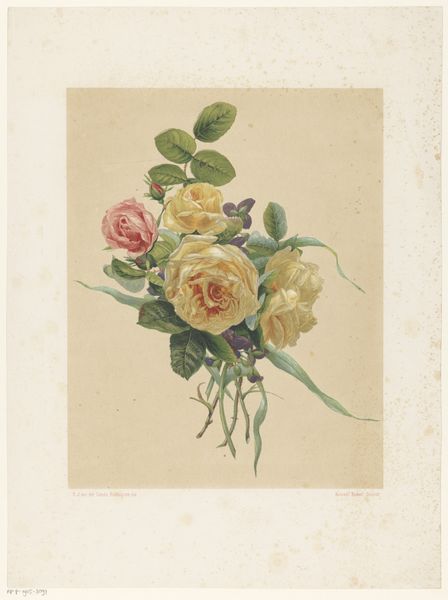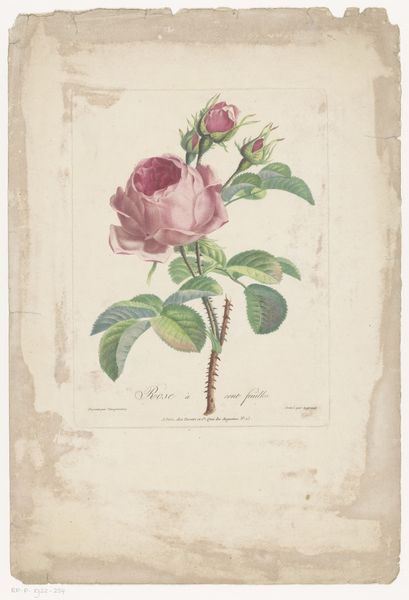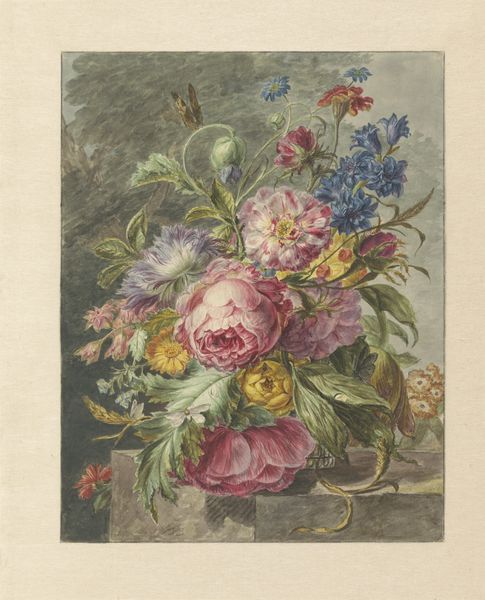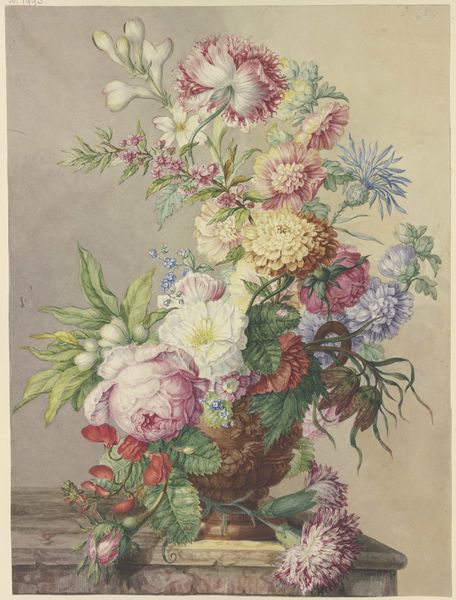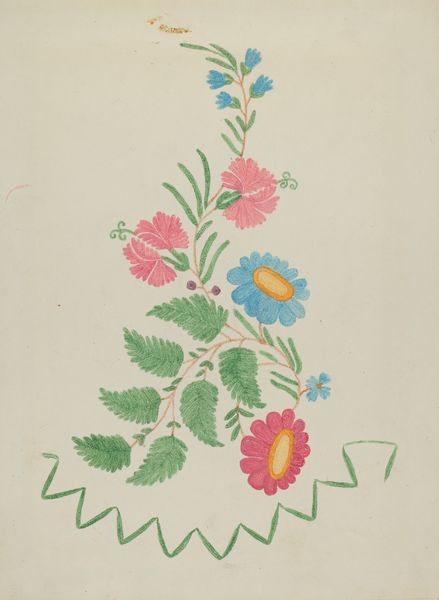
drawing, painting, watercolor
#
drawing
#
painting
#
watercolor
#
naive art
#
watercolor
Dimensions: overall: 35.5 x 27 cm (14 x 10 5/8 in.)
Copyright: National Gallery of Art: CC0 1.0
Curator: What a beautifully peculiar floral arrangement! My initial feeling is almost... nostalgic. It reminds me of wallpaper from my grandmother’s house, in the best possible way! Editor: We’re looking at "Quilt," a watercolor and possibly gouache piece, completed around 1936 by Ruth M. Barnes. The artist appears to be working within the "naive art" tradition. For me, that context—a Depression-era aesthetic, if you will—resonates strongly. Curator: Right. There’s definitely a handmade, homespun feel to it, a gentle refusal of prevailing modes of art making, like social realism, that were prevalent then. Tell me more about that context. Editor: Certainly. During the Depression, artistic styles like this one signaled a return to simplicity and to more 'accessible' representations, often implicitly critiquing a capitalist system then widely regarded as in crisis. This artistic approach aimed at restoring community values. The presentation of folk art provided solace. Curator: I get that sense of simplicity—though I also sense it could be considered deceptively complex. I’m not sure all of the blooms would appear in nature together on this 'branch'. It is like a celebration of different flowers. The watercolor creates such vibrancy! Editor: And to continue to push your insight, it asks a significant set of questions: "How is tradition inherited through domestic crafts?" And, perhaps more pointedly, "what can these vernacular styles say about resilience, domestic labor, and even perhaps resistance to a dominant ideology in their apparent quietude?" Curator: Ah, so much is revealed! It isn’t *just* a pretty picture of flowers, after all. I shall have to examine all such artwork a lot more from now. What have we learnt here? Editor: Just that art is always, always, so much more than we imagine, doesn't it? The painting allows viewers to find their own meanings and construct narratives in conversation with the piece, its history, its maker, and themselves.
Comments
No comments
Be the first to comment and join the conversation on the ultimate creative platform.
